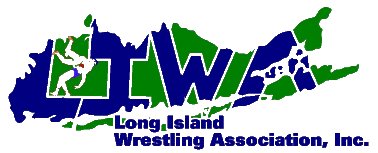
Long
Island Wrestling Association
|
|
|
|
||||||||||||||||||||||||||||||
|
John Gaglione's Off Season Wrestling Training # 3
Teaching Drills for Improving the BIG THREE: Part 3 Deadlift Drills The deadlift is my
favorite lower body exercise for all wrestlers. Pulling strength is key for all
wrestlers whether you are pulling an opponent’s leg in on a take downs or
lifting him off the ground and return him to the mat. The deadlift will also
work the muscles of the grip, which is crucial for gain position in the sport of
wrestling. The deadlift will build the muscles of the upper back, glutes,
hamstrings and the grip. All of these muscles are of paramount importance if you
want to perform better on the mat.
The difference between a squat and deadlift is one is a more of a Knee or Quad dominant exercise and the other is a Hip dominant exercise. In other words a good squat has more knee range of motion and a good deadlift has more hip range motion. Many beginner trainees will want to round their back in the beginner stages when first learning to deadlift.
The stick good morning helps teach proper spine position in the deadlift. The athlete will set up hold a stick on their back. One end of the stick will remain in contact with their upper back (near head and cervical spine) and the other remains in contact with their lower back (lumbar spine). The athlete will be instructed to perform a “hip hinge”, which essentially is the good morning exercise. If the athlete rounds their back (goes into lumbar flexion) the stick will lose contact with the body. This makes the stick good morning a great self checking tool when working on form for the deadlift. If the stick doesn’t remain in contact with the athlete the movement was performed poorly.
In the last section we learned how to keep a neutral spine for deadlifts with the stick good morning. The draw back to the stick good morning is the athlete can still “squat” the stick without really sitting back. In order to develop a really solid “hip hinge” pattern for deadlift we like implement the Wall RDL.
The wall RDL is a great way to teach the athlete to sit back during a deadlift. It is one of the best ways to teach the athlete to hinge at the hips, which is a critical skill to learn for performance and overall health.
You can even combine both of these drills together to create an even more effective and faster teaching tool for all athletes. The deadlift is one of the best exercises for wrestling because it develops the entire posterior chain. Learning proper form for all types of deadlifts is crucial for developing a strong and bullet proof back and will surely help you be more successful on the mat. Educate, Motivate, Dominate If you have any questions feel free to e-mail me at gaglionestrength@gmail.com or check out my website www.gaglionestrength.com To take your wrestling to the next level and ensure this coming wrestling season is your best one ever go to GaglioneStrength.com and e-mail Coach Gaglione for more information on wrestling training.
|